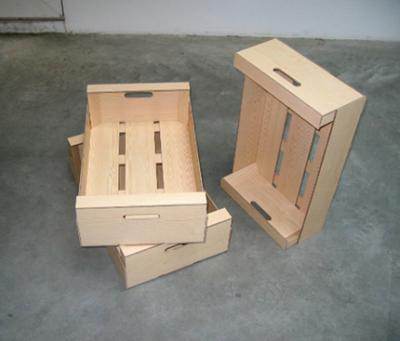Hi,
I know I grow too many plants for the time I can invest.
The soil of my allotment is watterlogged hard clay, so that everything I sow directly has a very hard time growing (despite the heavy mulch).
I got the allotment in march of 2015, and I'm getting much better results this year, but it's quite a lot of work growing everything at home in small pots to plant in the allotment afterwards.
I may success in direct sowing next year, but for the time being, I have to keep on growing in pots before planting.
I also have a garden at home, and one at work, and I LOVE giving away plants (vegetables,
medicinal plants, fruit
trees, whatever) at other gardeners at the allotment, neighbours, friends, family and colleagues.
So... I know I will have to go on growing plants from seeds in pots until I resign.
For the time being, I use crates
in which I put 7 rows of 5 plastic pots

.
Most of the time, each row contains a different variety/cultivar. I'm pretty fast at doing that, so that's not the problem.
What I'm not good at is to "unmarry" seedlings once they grew up. I just can't resign myself to remove seedlings just to let one thrive... So I remove everything from the pot, and redo another crate with just one seedling per pot. I have to find the right level of humidity to manage to unknit
roots, and THIS IS REALLY TIME CONSUMING...
I know I
should sow less, but I need many plants of each cultivar/variety and don't have much room in the
greenhouse at home. If I ever was sowing just one crate at a time with one cultivar/specie, I would not grow that many varieties...
In fact, seeds of different varieties don't sprout at the same time with the same vigour, so that I can unmarry just one row, and get a crate with ready-to-plant seedlings out of the
greenhouse.
So, I'm quite happy with the methology, except it takes me too long a time to unmarry to create new "ready-to-plant-in-near-future" crates.
Maybe I'm totally stupid in the way I do, or I maybe could just enhance the last part of the process. I thought of showering the content of the pots in order to unknit the roots more easily, but I'm not sure.
Anyway, if you ever have any tip or think my method is pure BS, please let me know.
Thanks.






 .
.




 2
2




![Filename: soil-blocker.jpg
Description: [Thumbnail for soil-blocker.jpg]](/t/58717/a/43347/soil-blocker.jpg)




 1
1









 2
2









 1
1




 1
1













